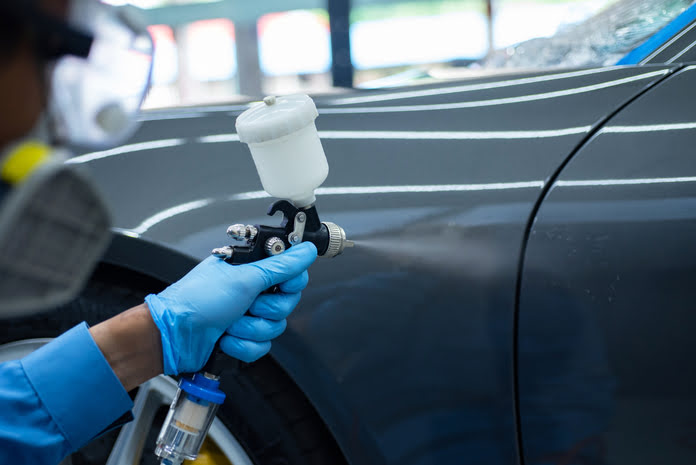XPEL, Inc. (NASDAQ:XPEL) has established itself as a major global leader in the provision of automotive paint protection films, with continually strong growth. However, as worrisome clouds gather on the economic horizon, one must wonder whether XPEL’s amazing achievement will be sustained or if the company’s growth trajectory will be halted. In my opinion, the company’s success story has legs to go even further, and I explain why in this piece.
High-Quality Development
As a car owner, you’re probably well aware of the aggravating damage that road debris and rock chips can cause to the paint on your vehicle. The anguish grows when it marries the gleaming aspect of a brand-new car, just driven from the dealership. XPEL has built a reputation for providing solutions to this widespread problem.
XPEL manufactures protective films and coatings for the automotive industry. Paint protection films (PPF) from XPEL may be familiar to car aficionados. Surface protection films and window films are also available from the company. The company’s staple products protect the paint and other interior and exterior surfaces of vehicles from unattractive damage caused by road debris, rock chips, and scratch marks. XPEL supports consumers in keeping the vehicle’s resale value while maintaining the sought-new-car appearance. The company sells its protection films and software to installers, who are qualified specialists in charge of applying the films.
XPEL provides items for homes and offices in addition to vehicles. In addition, the company offers installers with its Design Access Program (DAP) software. DAP is a vast archive of film patterns, including tens of thousands of paint, window tint, and headlight designs. However, the majority of the company’s revenue is generated by selling PPF directly to installers and vehicle dealerships, or indirectly, mostly in international markets, through distributors.
I feel that what separates XPEL is its tremendous expansion in recent years, achieved without losing revenues or margins. According to the company’s most recent financial report, annual revenues increased by 25% to $324 million, and net income increased by 31% to $41.4 million. In addition, its profit margin increased from 12.2% to 12.8%. A short analysis of XPEL’s financial history reveals that this rapid expansion is not an outlier; the company has continuously increased its revenues, profits, and margins over the last few years.
Looking Forward
However, the present economic slowdown, which may result in a fall in automobile sales and perhaps push customers to cut back on spending or postpone purchasing decisions, puts a cloud over XPEL’s future prospects. This headwind, I fear, could jeopardize the company’s ability to maintain its growth trajectory on both the top and bottom lines.
To counteract inflation, the Federal Reserve has been hiking interest rates. Since March of last year, the Federal Reserve of the United States has raised overnight interest rates from near zero to the current range of 4.75% to 5.00%. Some central bank members, however, have suggested that the bank may soon stop rate hikes in response to financial market instability caused by the banking crisis. At its meeting next month, the Fed is generally expected to announce another quarter-point increase, perhaps raising rates to the 5.00% – 5.25% range, the highest since 2007.
Higher interest rates are anticipated to permeate the economy, causing it to slow and potentially bringing inflation closer to the Fed’s 2% target. The significant rise in interest rates has increased borrowing costs for households and businesses, perhaps forcing them to cut back on expenditure. It is unclear whether this will cause the world’s largest economy to enter a recession or simply have a modest negative impact on jobs and GDP. The economy is in jeopardy, and the Fed must step carefully.
If the United States enters a recession, consumers may cut down on spending, automobile sales may suffer–especially if rising interest rates discourage potential buyers–and XPEL may see a drop in demand. In this case, the company may struggle to maintain double-digit revenue and earnings growth while increasing margins.
Nonetheless, we have yet to see any tangible indicators of a substantial decline in the auto business, so this could be a worst-case scenario. In fact, with the exception of Toyota Motor Corp. (NYSE:TM), all major global manufacturers have recorded improved sales. General Motors (MYSE:GM), the largest carmaker in the United States, announced a 17.6% increase in first-quarter sales. Perhaps the pent-up demand is offsetting the negative consequences of high-interest rates.
More importantly, XPEL has not detected any significant red signals indicating a slowdown in business activity or a drop in demand. Rather, during a recent results call, management stated that the US market did “exceptionally well” in Q4 2022, with XPEL experiencing 31.6% growth in the region. The United States is XPEL’s largest market, accounting for approximately 60% of the company’s revenue in 2022.
However, the absence of any serious indicators of an economic slowdown from the auto industry thus far does not rule out future issues. This is an area that I feel investors should keep a careful eye on.
Nonetheless, even if difficult market conditions eventually hit all auto industry participants, I believe XPEL is better prepared than others to weather market volatility for two key reasons.
To begin with, XPEL has effectively developed a formidable brand image not only among end users but also among installers. This achievement is unrivaled by its competitors, with no other PPF brand commanding such high regard among automobile aficionados worldwide. While many consumers are aware of firms such as 3M Co (NYSE:MMM) that offer similar PPF solutions, XPEL stands out as the preferred choice for many car enthusiasts, thanks to marketing efforts focused on building a strong and recognizable brand identity. The Design Access Program (DAP) demonstrates how the company regards its installers as valued clients, aiming to improve their experience. The DAP, with its unrivaled repository of over 80,000 designs and pre-cut films, reduces waste and speeds up installation times.
Second, there is significant growth potential, implying that XPEL might continue to identify chances to boost revenues and earnings even in a negative environment for the broader automotive sector. A sizable market group is still mainly unaware of PPF and its benefits for vehicle protection. XPEL can contact this untapped demographic and perhaps boost its business by utilizing efficient marketing methods and exploiting new car dealerships, where the bulk of consumers are non-enthusiasts.
Another growth driver is China, which I believe will play a larger role this year than it did last. Strict COVID-19 regulations in the country harmed XPEL’s performance in 2022 since it was the only region where sales fell. China was XPEL’s second-largest market in 2021, contributing over 18% of company revenues. However, sales plummeted by around 27% in 2022, and China’s revenue contribution declined to approximately 10.5%. These conditions are set to alter this year as China reopens after a lengthy period of closures and travel restrictions.
In contrast to the United States, China’s economy is rebounding, with GDP growth expected to rise to 4% in Q1 2023, up from 2.9% in Q4 2022, according to a recent Reuters poll. This year, XPEL’s distributor in China aims to conduct a large dealer conference, which was previously prohibited due to lockdown measures. As a result, activity is expected to increase, and XPEL’s marketing efforts will be stepped up. In addition, the company intends to increase its footprint in China by launching additional PPF products. I believe that China might deliver a significant boost to XPEL’s revenues and earnings in 2023, potentially compensating for any local issues.
Takeaway
In light of these facts, and despite the headwinds that XPEL is facing, I believe the company will continue to perform well. Its stock has increased by 20% this year, and for the reasons stated above, I believe it will outperform the industry. However, the stock is not cheap, now selling at more than 35x estimated future earnings and 24x EV/EBITDA, exceeding the industry norms of 15.4x and 9.5x, respectively. As a result, I rate XPEL stock as a hold.
Featured Image: Freepik









